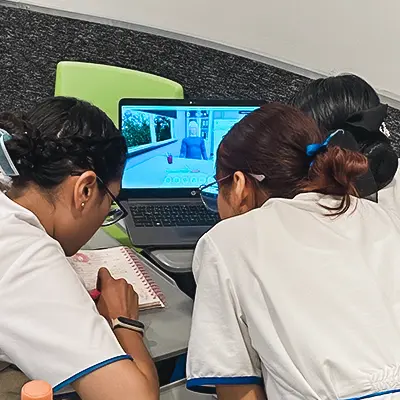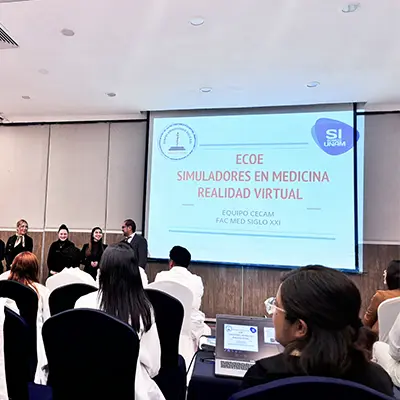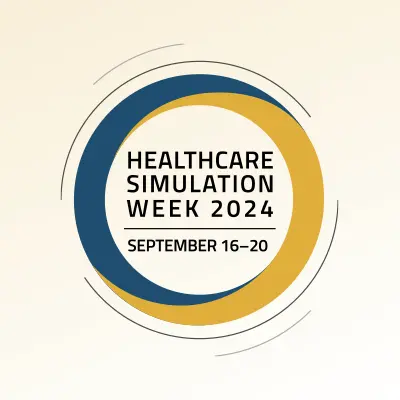SIMex 2023
The 7th International Meeting on Clinical Simulation, SIMex 2023, entitled: “Clinical Simulation: Strengthening the Present for the Professional Future” was held. It is an academic event whose objective is to share experiences and exchange ideas about the world of clinical simulation and its contribution to the educational process of health professionals.
The event took place with multiple academic activities at the facilities of the Faculty of Medicine of the National Autonomous University of Mexico (UNAM), ranked number 93 in the prestigious QS World University Rankings 2024, where it is the most prominent in Latin America and number one, from Mexico.
Dr Josefina Serrano Pérez, Coordinator of the Center for Educational Innovation in Medicine and Clinical Simulation of the Mexican Faculty of Medicine of the La Salle University, in Mexico City (ULSA), gave the workshop: “Tools for teaching clinical competencies ”, whose objective was to present a methodology for the curricular integration of virtual patients, reinforcing, among other points: the clear establishment of learning objectives and the development of the table of specifications or academic requirements. From these two points, the selection of the case or virtual patient continues, for which tools provided in the Body Interact case library are used, where the interrelation of the defined academic objectives is carried out with the described objectives provided regarding the virtual patient.
She started the workshop at SIMex 2023 by defining what is a Virtual Patient.
Virtual patient
Previously programmed cases or examples that represent simulated clinical scenarios and allow the student to make diagnostic and therapeutic decisions.
Getting hands-on
Subsequently, she carried out an application case with the attendees where they played the following role: “You are in charge of the simulation centre for the medical surgeon degree, where the objective will be to integrate a virtual patient in the training of students in clinical competence in obstetrics.”
From this statement, the participants developed the steps described in the methodology:
- Establishment of learning objectives
- Development of the table of specifications or academic requirements
- Selection of the case or virtual patient based on the interrelationship of the defined academic objectives with the objectives described in the virtual patient.
At this point, Dr. Serrano led an interactive session using Body Interact with the patient selected by the participants. During the session, the participants enjoyed the experience of treating a Virtual Patient and observing how the decisions they made were reflected in the Virtual Patient’s state of health, and the latter evolved accordingly. The discussion about the referential diagnosis of the case, during the debriefing, generated reflections and allowed for a very enriching learning session. Likewise, Dr. Serrano highlighted the fact that the repetition of the solution of scenarios is an important learning base in this type of exercise.

For a successful implementation – Tips
Two points that Dr. Serrano reinforced, and that she considers critical for the success of the implementation and use of virtual patients were:
- The training that must be provided to the teachers involved in the application of the cases, so that the teachers can prepare the learning activities with their students.
- Understanding the reports generated by Body Interact®, available in the learning management system, the BI Studio®, to evaluate student performance.
Implementation of Virtual Patients in different contexts
Dr. Serrano concluded the workshop by interacting with the attendees and exploring the different environments of academic application of Virtual Patients, which they could distinguish, among which they highlighted:
- In the laboratory, with sessions guided by the instructor or sessions freely used by the students.
- In the classroom, through collaborative solutions and problem-based learning.
- In their own (virtual) environment, where students are assigned a set of virtual patients to solve, with an academic objective, over a period. Students can do it at home, or in other academic spaces. This extends the scope of the simulation laboratories beyond the physical installation and generates an exposure of the simulation to the students at different moments of their academic stay.
- Case-solving workshops, where students focus on collaboratively solving cases, with a defined theme and academic objective.
- Hybrid simulation environments, where Virtual Patients can be used and integrated into practice with other types of techniques, such as part simulators, standardized patients, low/high-frequency simulators, or observation-based learning techniques with video analysis.
By: Francisco Camargo, PhD








